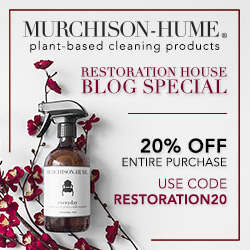
Mold and mildew are often thought to be the same. Although they share some similarities, they also have their differences. So using the two terms interchangeably is not okay. To identify which one is growing in your home, office, car, etc, you need some knowledge about these two types of fungi.
Mold and mildew are types of fungus that grow in places with high moisture levels, and warm temperatures. Despite the similar growth environments, getting rid of them will require different strategies.
How to Identify Mold and Mildew
Visibly, mold and mildew look similar but there are a few things that can tell them apart. They differ in their textures and colors. While mildew appears as flat spots of black color, mold appears as a fuzzy growth in black, green, yellow, pink, and white colors. Mildew has a powdery texture, whereas mold has a velvety or slimy texture.
Mildew grows on the surface. It is commonly found on damp walls, doors, shower grouting, and similar areas. Mold, on the other hand, grows on the surface and penetrates the objects. Mildew can be eradicated by swiping it off the surface, while mold needs a penetrative agent to kill it.
Knowing these differences will not only help you identify the type of fungus you’re dealing with but also help you kill it properly so that it doesn't come back again.
Let’s have a deeper discussion about the similarities and differences between the two fungus species.
Differences Between Mold and Mildew
The following differences are commonly found between mold and mildew:

Mold
– Mold appears in different colors, such as green, yellow, brown, black, white, and pink.
– It has a velvety or slimy texture that looks like a fuzzy or furry growth.
– Mold grows on organic materials and feeds on them. These materials include wood, fiber, clothing, leather, paper, paints, and plants.
– Mold has a strong musty odor that resembles a damp cleaning cloth sitting in a corner for too long.
– Mold penetrates the organic materials and does not die by cleaning off the surface.

Mildew
– Mildew is flat and appears as black spots or stains.
– It has a powdery texture that resembles dust.
– This type of fungus grows only on the surface and does not penetrate.
– It can be killed by wiping it off the surface.
– Mildew does not have an odor as strong as mold.
Similarities Between Mold and Mildew
-
Both need moisture to grow.
-
Mildew and Mold spread rapidly.
-
They have microscopic, air-borne spores.
-
Sunlight and other UV lights can destroy the DNA of Mold and Mildew Spores
-
They’re equally dangerous to health and cause allergies.
Mold vs.Mildew – Causes
The biggest factor for mold and mildew growth is moisture. If there’s water on a surface that does not evaporate within 24 hours, both types of fungus will grow there. Areas with a highly humid climate cause mold outbreaks regularly. Warm temperatures and a lack of sunlight foster both of them. Poor ventilation and dirt are other major factor for their growth.
To prevent mold and mildew growth, you need to take care of the causes mentioned above. If they’re not taken care of timely, the spread of mildew and mold becomes unavoidable.
Mold vs. Mildew – Favorite Spots
Although they can grow on anything with excess moisture, they are typically found in dark and hidden places. Some of these spots include:
-
Crawl spaces
-
Attics
-
Basements
-
Around showers and bathtubs
-
In ceilings, near exhaust fans or recessed lights
-
In walls and floors
-
Near water leaks
-
Inside wooden cabinets
-
In the carpet
-
On furniture
-
Under shower tiles
-
Flooded Areas
Check for mold and mildew in these spots. If you want to be completely sure, hire a mold removal company.
How to Prevent Mold and Mildew?
Preventing mold and mildew is not easy. They only need moisture and a normal temperature. However, there are still a few precautionary measures that you can take.
Monitor Moisture Levels
Keep a moisture meter in the house and use it once a week to check moisture levels. If the scale is high, or above 20%, you need to reduce the moisture.
Ventilate the Area
Properly ventilate your house so that fresh air can draw out contaminated, moist air. Poor ventilation keeps moisture and spores trapped in your house which leads to mold and mildew growth.
Fix Water Leaks
If the moisture readings are high, there’s a source of water leakage in your house. Check for broken or burst pipes in your walls, roof, and crawl space. Fix any cracks in the roof or walls. Make sure drainage pipes are not clogged and your basement or attic is not filled with stagnant water.
Run Dehumidifiers and Air purifiers
A dehumidifier will kill excess moisture in your house. Without moisture, mildew and mold will die automatically. Use air purifiers to trap stray mold and mildew spores from the air.
Clean Water Spill
Clean any spilled liquid from the floor, carpet, furniture, or clothing. If not cleaned timely, it will lead to mold and mildew growth.
How to Clean Mildew vs. Mold

Cleaning mildew and mold requires different strategies. Since we know that mold is penetrative, it requires a stronger cleaning agent that can reach under the surface of the objects. Mildew only grows on the surface and you can clean it by treating the surface only. However, both mildew and mold require strong killing agents and do not die with water or a simple cloth swipe.
Caution: Mold and Mildew are equally dangerous to health. You need protective gear, such as a mask, gloves, and goggles before you handle mildew or mold.
Cleaning Mildew
Mildew can be killed using household cleaning agents. You can dilute vinegar with water or apply a hydrogen peroxide solution to the affected area. If you don’t have either of these, you can use borax or bleach as well. Dilute whatever you have and apply it to the surface after you have cleaned the area with a brush. Let it sit for about 30 minutes and wipe off.
Cleaning Mold
To clean mold, you need to clean the surface with a brush first. After that, apply a mixture of either borax, bleach, hydrogen peroxide, peppermint, chlorine, or vinegar. Once you have applied it, you need to let it soak into the surface and dry out completely. After drying, you need to scrub the surface once again to clean off any residual mold. Dry out the affected area to prevent mold from growing again.
When to Call Mold Rxperts?
Dealing with mold or even mildew is not only dangerous to your health but there are chances of you spreading the spores accidentally instead of killing them. Anyone who is not handy and doesn’t have the proper equipment should not be dealing with objects and areas damaged by mildew or mold. Contact 24/7 Service Pros for mold removal if you are in South Florida.






